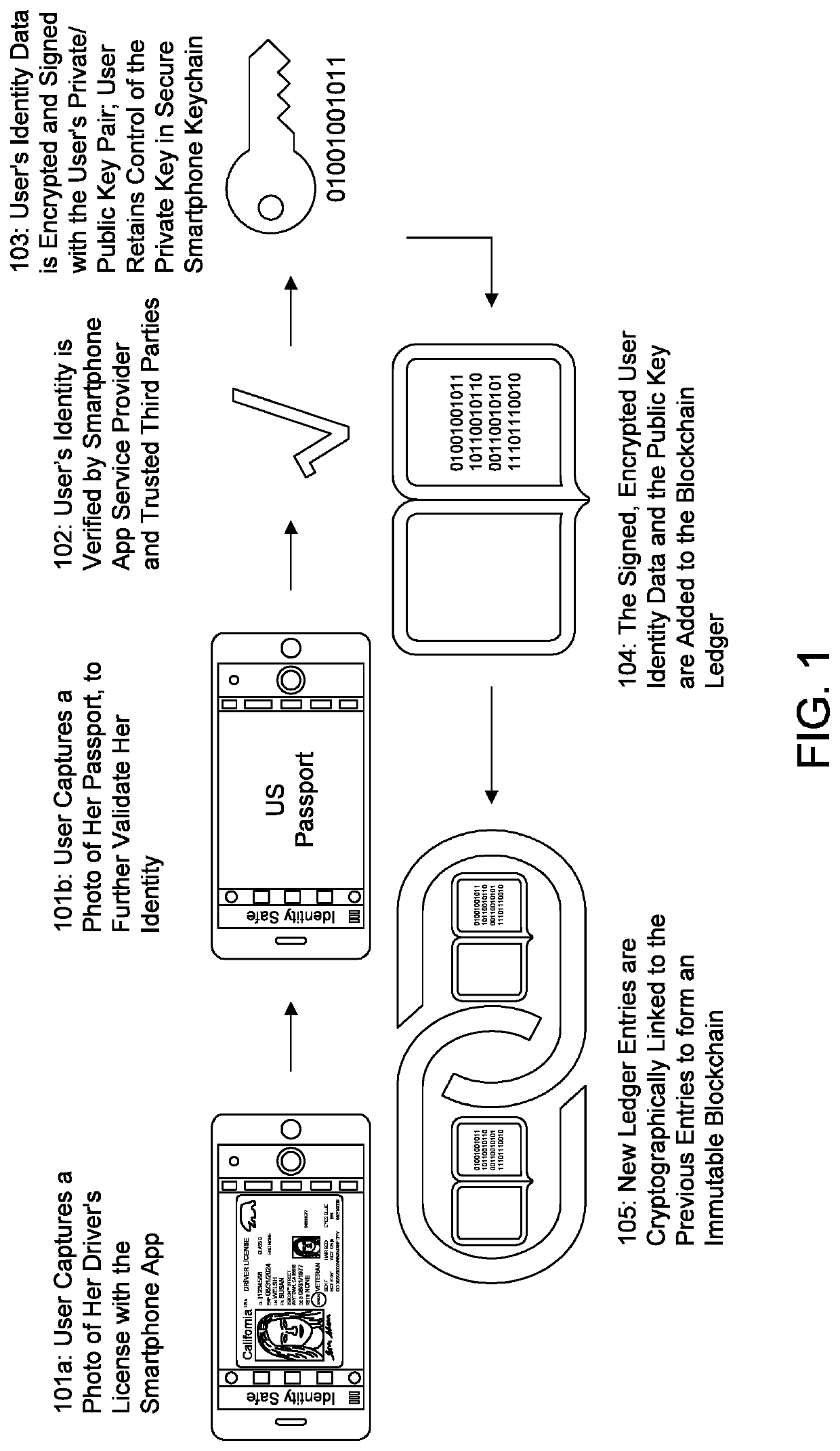Blockchain identity safe and authentication system
a block chain identity and safe technology, applied in the field of block chain identity safe and authentication system, can solve the problems of inefficient and insecure web service authentication, two-factor authentication typically never validates the user on the other end of the verification, and web service based authentication is inefficient and insecur
- Summary
- Abstract
- Description
- Claims
- Application Information
AI Technical Summary
Benefits of technology
Problems solved by technology
Method used
Image
Examples
Embodiment Construction
[0019]Specific embodiments of the invention will now be demonstrated by reference to the following examples. It should be understood that these examples are disclosed solely by way of illustrating the invention and should not be taken in any way to limit the scope of the present invention.
[0020]The present invention takes advantage of blockchain technology to provide an efficient identity authentication system and process that is constantly updated, accessible to anyone, verified by a distributed computer network, and highly secure. This invention also enables users and companies (and others) to move away from paper-based physical identity and into digital identity, and provides enhanced privacy, security, transparency and individual rights.
[0021]In one aspect of the present invention, and as will be discussed in more detail below, a user signs into a smartphone identity safe app to store his or her verified physical and digital identity data, that has been encrypted and signed by t...
PUM
 Login to View More
Login to View More Abstract
Description
Claims
Application Information
 Login to View More
Login to View More - R&D
- Intellectual Property
- Life Sciences
- Materials
- Tech Scout
- Unparalleled Data Quality
- Higher Quality Content
- 60% Fewer Hallucinations
Browse by: Latest US Patents, China's latest patents, Technical Efficacy Thesaurus, Application Domain, Technology Topic, Popular Technical Reports.
© 2025 PatSnap. All rights reserved.Legal|Privacy policy|Modern Slavery Act Transparency Statement|Sitemap|About US| Contact US: help@patsnap.com



